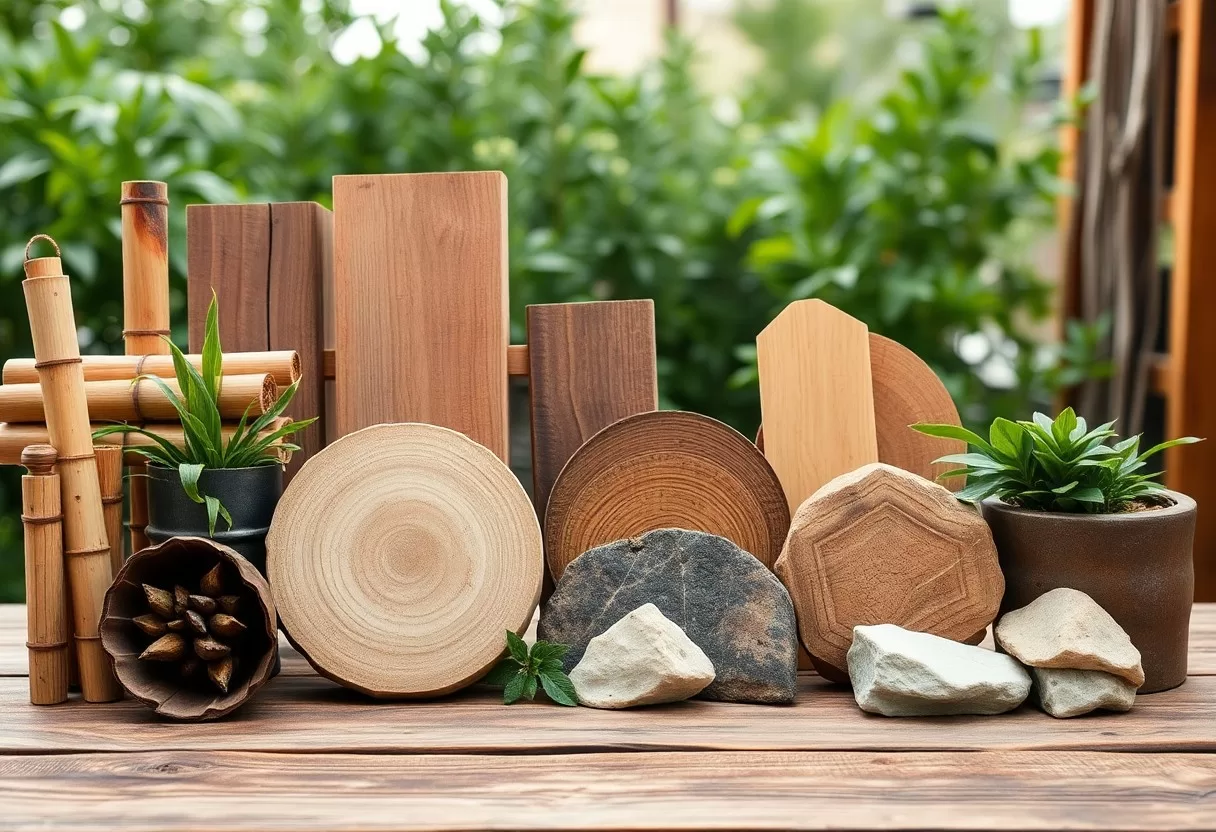Choosing Sustainable Building Materials – Your Essential Guide To Eco-Friendly Options
Building a sustainable future starts with the materials you choose for your projects. By opting for eco-friendly options, you not only contribute to the health of our planet but also ensure a safer living environment for yourself and future generations. This guide will walk you through various sustainable building materials, helping you make informed decisions that positively impact both your home and the environment. Discover how your choices can drive change and elevate your construction or renovation projects to a new standard of sustainability.
Key Takeaways:
- Prioritize renewable materials such as bamboo, reclaimed wood, and recycled metals to reduce environmental impact.
- Consider the lifecycle of materials, including their production, transportation, usage, and disposal, to assess overall sustainability.
- Look for certifications like FSC (Forest Stewardship Council), LEED, or Energy Star that indicate eco-friendly practices in the supply chain.
- Opt for low-VOC (volatile organic compounds) products to improve indoor air quality and minimize health risks.
- Invest in durable materials that require less maintenance and replacement, contributing to long-term sustainability and cost-effectiveness.

The Environmental Impact of Your Choices
Every choice you make regarding building materials has a ripple effect on the environment. Selecting sustainable options is not just a trend; it significantly reduces resource consumption and minimizes waste. For example, utilizing reclaimed wood or recycled steel can help divert waste from landfills while conserving natural resources. Furthermore, these choices support local economies and promote biodiversity, contributing to a healthier ecosystem. Understanding the environmental impact of your decisions empowers you to make informed choices that align with eco-friendly principles.
Carbon Footprint Reduction in Building Materials
Your selection of building materials directly influences the carbon footprint of your project. Opting for locally sourced or recycled materials lessens transportation emissions and production energy requirements. For instance, using bamboo, which grows rapidly and absorbs carbon dioxide, can be an excellent alternative to traditional lumber. Certifications like LEED also help gauge the sustainability of materials, ensuring your choices make a positive impact on the planet.
Lifecycle Analysis: From Extraction to Disposal
Engaging in a lifecycle analysis is imperative in understanding the full impact of your building materials, from their extraction to their eventual disposal. This holistic approach examines the environmental costs associated with resource harvesting, manufacturing processes, and end-of-life scenarios. Awareness of these phases helps you evaluate how different materials can contribute to sustainability.
A lifecycle analysis takes into account energy consumption, emissions, water use, and waste production at each stage. For example, concrete has a high carbon intensity during production, contributing significantly to greenhouse gas emissions. In contrast, materials like straw bales or rammed earth have a lower environmental impact across their lifecycle. By evaluating these aspects, you gain insight into which materials are genuinely sustainable, allowing for better decision-making in your building projects.
Navigating Certifications: Trustworthy Labels Unveiled
Certifications serve as beacons of trust in the myriad of sustainable building materials available. They help you sift through options and choose products that genuinely contribute to eco-friendliness. A reliable label indicates that a product has passed rigorous assessments, ensuring its sustainability claims stand up to scrutiny.
Understanding LEED, FSC, and Cradle to Cradle
LEED (Leadership in Energy and Environmental Design) is a widely recognized green building certification reflecting efficiency in energy use and environmental stewardship. The FSC (Forest Stewardship Council) label guarantees that wooden products are sourced sustainably, ensuring responsible forest management. Cradle to Cradle focuses on the lifecycle of materials, promoting products that are safe for humans and the environment and can be fully reclaimed or recycled.
The Role of Green Certifications in Material Selection
Green certifications play a vital role in your selection of sustainable materials by providing third-party validation of a product’s environmental performance. With so many options, these certifications simplify your decision-making process by confirming that the materials have been assessed against rigorous standards. For instance, using LEED-certified materials can contribute significantly to your project’s overall sustainability score, reducing its carbon footprint and increasing market appeal.
When you choose materials with reputable certifications, you also support manufacturers who prioritize sustainability. This creates a ripple effect, encouraging more companies to adopt eco-friendly practices. For example, the LEED system provides points for using certified materials, which can directly influence your construction project’s energy efficiency and occupant health. Engaging with these certifications helps ensure that each product not only meets your aesthetic and functional needs but also aligns with broader environmental goals, making a substantial positive impact on future generations.

Innovating with Heritage: Traditional Materials Reimagined
Reimagining traditional materials offers a unique opportunity to merge craftsmanship with sustainability. By utilizing age-old materials like timber and clay, you can create structures that not only respect historic design but also reduce environmental impact. Innovations such as engineered wood and sustainably sourced clay allow you to maintain authenticity while meeting modern eco-friendly standards. You can explore more about these and other options in Sustainable Construction Materials: A Guide for Construction Managers.
Sustainable Alternatives to Conventional Choices
Modern alternatives to conventional building materials are gaining traction, as they offer sustainable solutions without compromising on quality. Materials like hempcrete, recycled metal, and reclaimed wood provide durable options that minimize harm to the environment. These innovative choices showcase how you can construct your projects responsibly while achieving superior performance and aesthetics.
Reviving Local Materials: Economic and Ecological Benefits
Embracing local materials can dramatically decrease your project’s carbon footprint and support community economies. Utilizing nearby resources reduces transportation emissions and fosters regional craftsmanship, which often translates into unique architectural features. Additionally, by sourcing locally, you contribute to sustainable practices that preserve traditional building methods and enhance local culture.
The economic and ecological benefits of reviving local materials extend beyond immediate construction needs. For example, using regional stone not only cuts down on transport emissions but also supports local quarries and tradespeople. Projects that incorporate local materials often see increased community buy-in, leading to enhanced social cohesion. Furthermore, the environmental impact is significantly lessened, as this practice protects local ecosystems by minimizing disruption associated with long-distance material transportation. Overall, by choosing local, you secure both the environment’s health and the community’s economic vitality.
The Price Tag of Sustainability: Balancing Costs and Benefits
Investing in sustainable building materials often results in a higher initial expenditure compared to traditional options. However, this upfront cost is often offset by long-term savings and environmental benefits. Making informed choices can mean spending less on maintenance and utility bills over time, leading to a more profitable outcome for your project. Understanding how to balance these financial aspects helps you prioritize sustainability without breaking the bank.
Understanding Long-Term Savings versus Upfront Investment
Focusing solely on the upfront price can be misleading. Sustainable materials may require a larger investment initially, yet their durability can result in significant savings over time. For example, energy-efficient windows may incur higher costs but can reduce heating and cooling bills substantially. By evaluating the lifetime costs rather than just the purchase price, you can make smarter decisions that pay off in the long run.
The Value Proposition of Durable, Sustainable Materials
Durable, sustainable materials offer remarkable value beyond their eco-friendly label. Investing in high-quality products can lead to fewer replacements over time, a fact that translates into reduced waste and lower maintenance costs. For instance, recycled steel framing boasts a lifespan of over 100 years, minimizing lifetime material usage inmultiple building phases. Such longevity ultimately results in a lower carbon footprint and lightens your environmental impact, affirming that your investment aligns with both economic and planetary well-being.
The Future of Building: Emerging Trends in Eco-Friendly Materials
The future of building lies in the integration of innovative eco-friendly materials that not only reduce environmental impact but also elevate design and sustainability. As architects and builders lean towards greener practices, keep an eye on upcoming trends such as self-healing concrete and 3D-printed structures crafted from recycled materials. These advancements signify a shift in how construction can align with nature and resource conservation. For a deeper look into what’s on the horizon, check out The Ultimate Guide to Sustainable Building Materials in 2024.
Biodegradable Materials and Their Promise
Biodegradable materials are reshaping the construction landscape, offering sustainable alternatives that can decompose naturally without leaving harmful residues. Resources such as mycelium, a fungus-based material, and bamboo, known for its rapid growth and renewability, showcase the potential for materials that not only serve your needs but also benefit the ecosystem. By choosing biodegradable options, you contribute to reducing landfill waste while maintaining an eco-conscious building process.
Advances in Technology: Cutting-Edge Sustainable Innovations
Innovation drives the development of sustainable building materials, with technologies like nanomaterials and smart textiles leading the way. These materials enhance energy efficiency and adaptability in construction. For instance, photonic materials can regulate indoor temperatures by adjusting their properties based on sunlight exposure. As these advanced technologies become more accessible, you can expect a significant decrease in your projects’ carbon footprints, fostering a new era of sustainable building practices.
Further advancements include the use of robotics for precise assembly, reducing waste and errors on-site. Smart building systems, equipped with IoT sensors, optimize energy consumption, making it easier for you to monitor and manage resource use effectively. These innovations are not only making buildings more sustainable but also creating a more efficient construction process overall, setting the stage for a greener future in the industry.
To wrap up
Following this guide on choosing sustainable building materials, you are equipped to make informed decisions that benefit both your projects and the environment. By prioritizing eco-friendly options, you not only contribute to reducing your carbon footprint but also enhance the durability and longevity of your structures. As you commence on your building journey, consider how your choices can lead to a healthier planet while still meeting your design and aesthetic goals. Embrace sustainability as an integral part of your building strategy for a brighter future.
